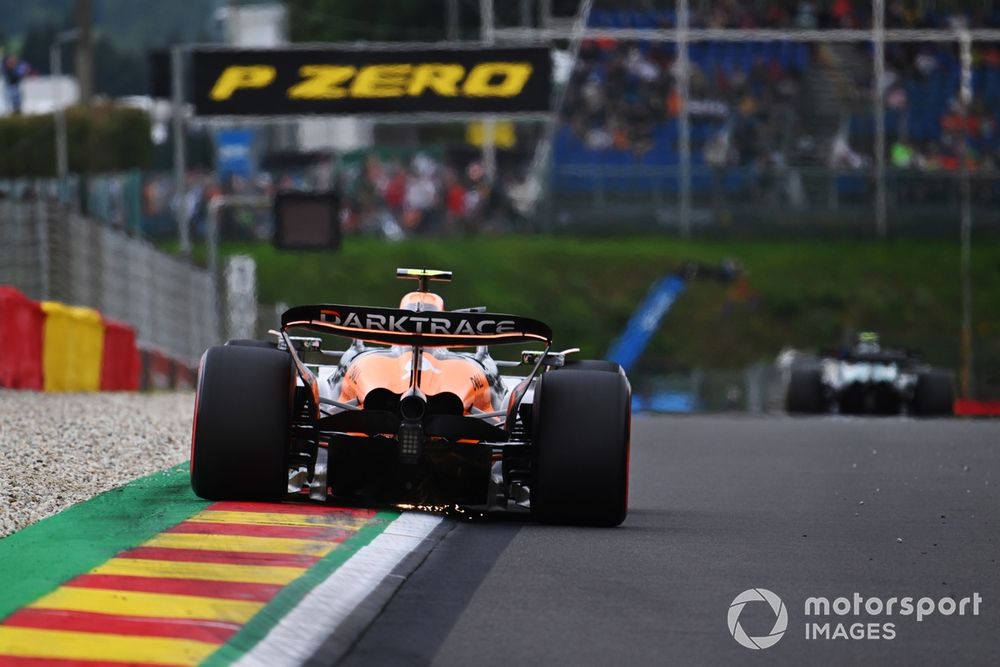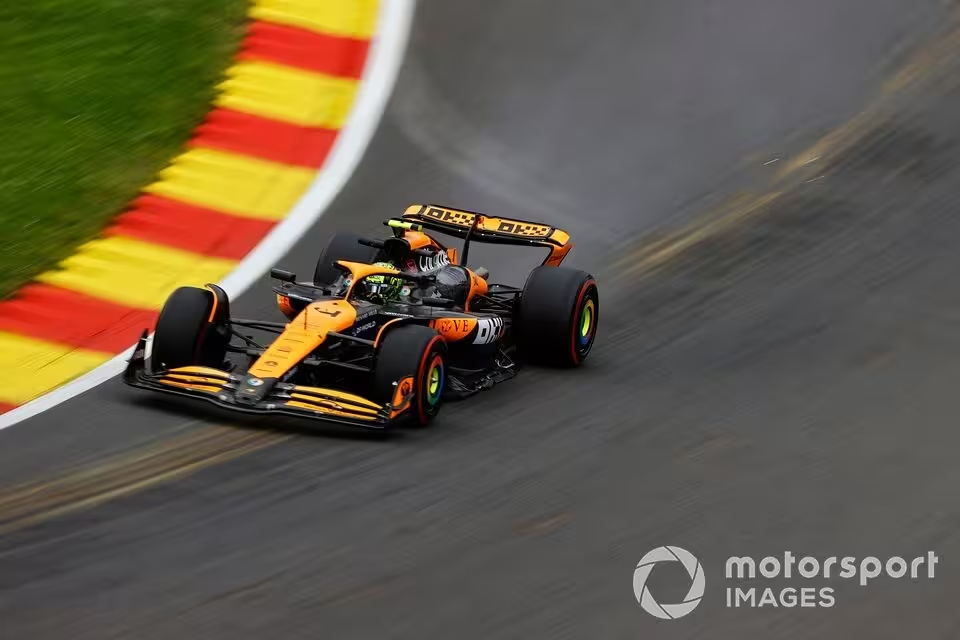McLaren introduced a new rear wing at Formula 1’s Belgian Grand Prix that signals a shift in concept direction and moves it closer to what Red Bull is doing.
The wing is not only the lowest downforce variant that the Woking-based squad has run on its MCL38 this year, but it is believed to be the first of a new suite of options with this idea that will be rolled out for different track types.
We usually categorise the rear wings presented by teams into three simple categories: low, medium and high downforce variants.
But inevitably, given the variety of the circuits on the calendar, there is a little more to it than that, with some adaptability baked into how each of those arrangements might be configured.
Teams now are increasingly balancing out the downforce/drag of their rear wings with their beam wing solution too, as these can help fine-tune the car balance to hit the sweet spot.
Furthermore, the chord length of the upper flap, whether there’s a Gurney flap applied to the trailing edge of the flap or not, plus the shape of the tip section and endplate cutout, are all means of modifying a given wing to suit specific demands.
Lando Norris, McLaren MCL38
Photo by: Andy Hone / Motorsport Images
Close examination of the McLaren rear wing introduced in Belgium shows it carries some new DNA when compared with the family of solutions previously utilised this season.
The most obvious of these is the transition zone between the mainplane and endplate, as a much squarer radius has been sought.
There are several ramifications to this, given that numerous flow structures converge at the juncture. The shape of the cutout and the semi-detached tip section have also been modified as a consequence.
The lower downforce variant of this new design lineage obviously takes up much less space within the allowable box region, but it does so across the entire span of the wing.
This results in a more uniform shape across the width of the wing, rather than displaying the deeper spoon-shaped profile that’s normally associated with this regulatory era.
The upper flap has also been redesigned in concert with these changes, not only in order that it works appropriately in a closed state, but also in an effort to improve performance when DRS is in operation.

Lando Norris, McLaren MCL38
Photo by: Sam Bagnall / Motorsport Images
This is a clear step change in philosophy from the past and appears to move McLaren much closer to…
Click Here to Read the Full Original Article at Autosport.com – Formula 1 – Stories…

